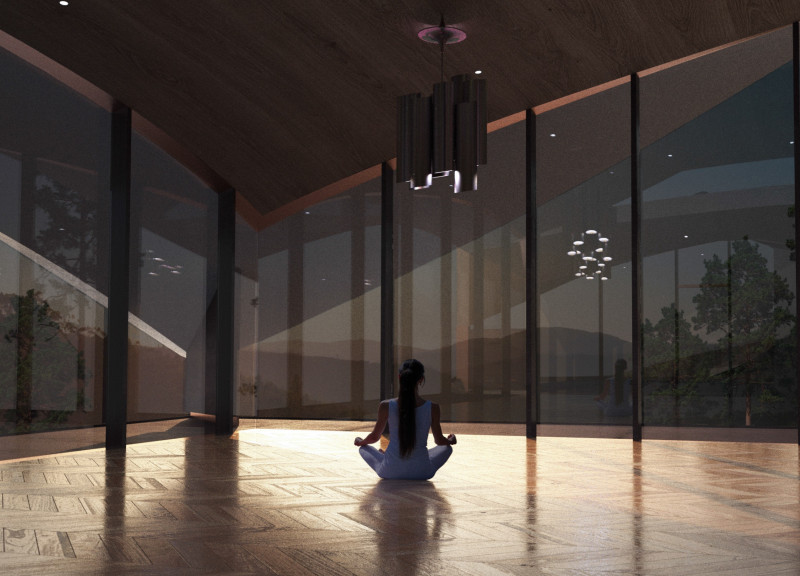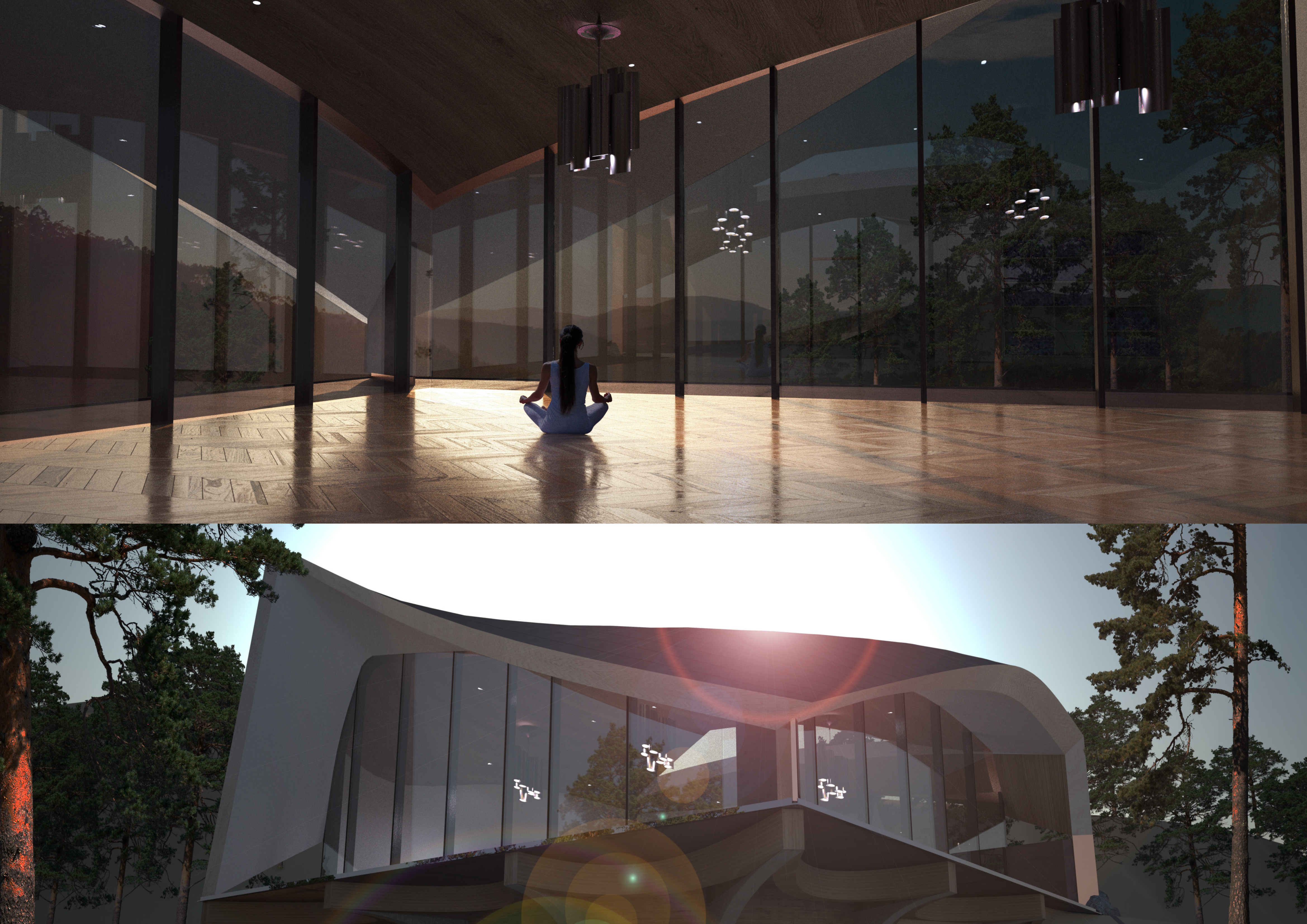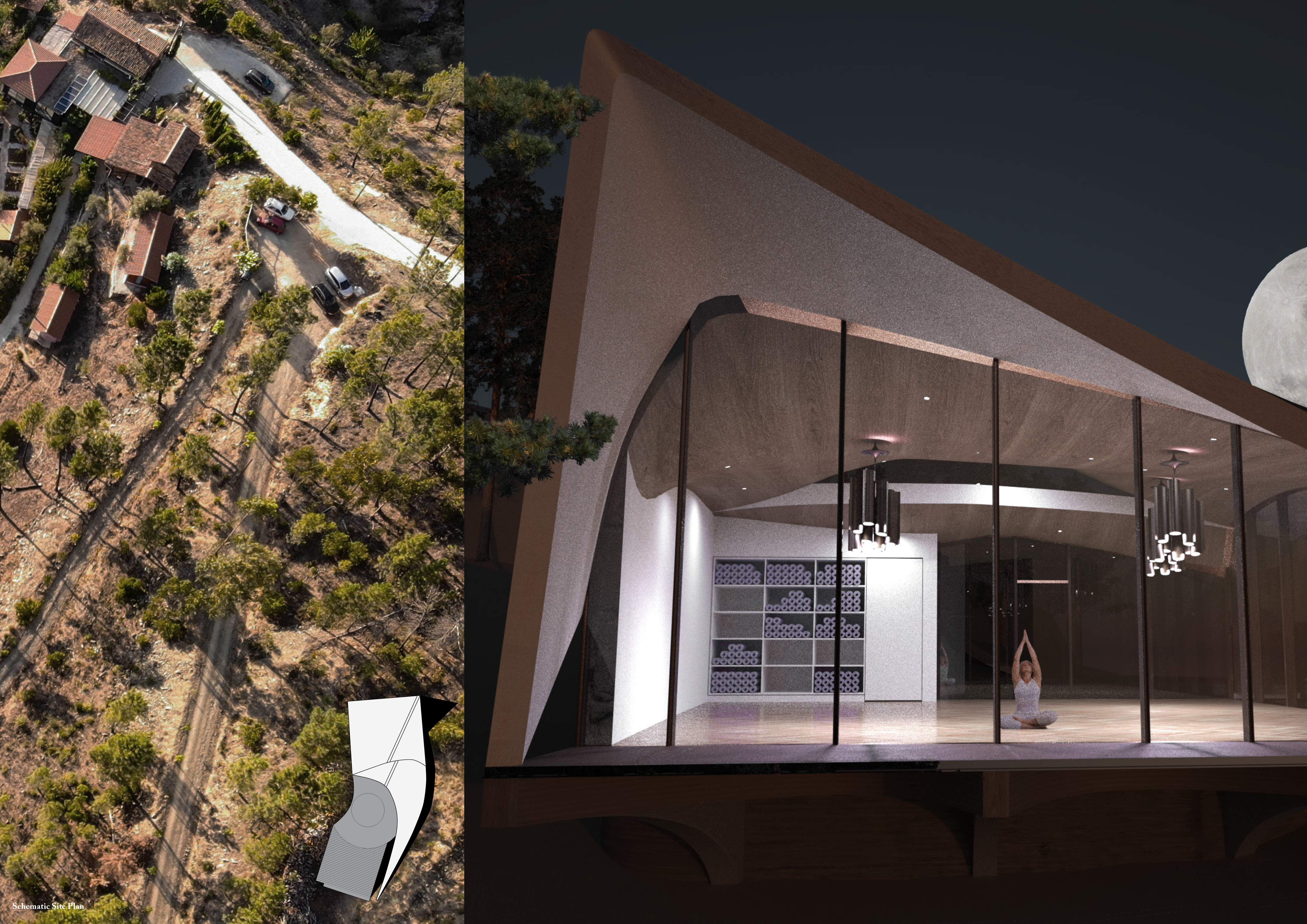5 key facts about this project
Located in Vale de Moses, Portugal, the building is designed with sustainability and environmental integration in mind. The function of the structure centers on offering a comfortable living space that aligns with modern ecological values. The design concept emphasizes energy efficiency and thoughtful use of materials while responding to the site’s natural features.
Design Elements and Materials
The slate solar roofing is a key feature, providing durable protection while generating renewable energy. This roofing choice enhances the building's functionality and adds to its visual appeal, bridging the gap between practicality and aesthetics.
A glulam frame serves as the primary structural element, showcasing efficient timber engineering. This material allows for spacious interiors and offers a more environmentally friendly option compared to traditional framing methods. The natural warmth of the wood creates an inviting atmosphere.
Rammed earth construction plays a significant role in energy efficiency. This method uses local materials, creating thick walls that help maintain a stable indoor temperature. This choice reflects a respect for local building traditions while ensuring a minimized impact on the environment.
A rain catchment and recycling system is integrated into the design, addressing water management effectively. By capturing and reusing rainwater, this system supports sustainability and reduces demand on local water supplies. It emphasizes responsible resource use in the living environment.
Overhangs have been strategically designed to enhance solar gain, allowing natural light to illuminate the space while also providing shade during hotter periods. This design consideration showcases an understanding of local climate conditions while promoting energy efficiency in the home.
Sustainable or recycled wood flooring adds to the interior aesthetic. This flooring choice supports the commitment to eco-friendly materials, providing both visual warmth and a tactile connection to nature.
Large windows frame stunning views of the landscape, establishing a connection between the interior and the outdoors. This design choice encourages residents to engage with their surroundings, making the experience of living in the space more enriching.






















































